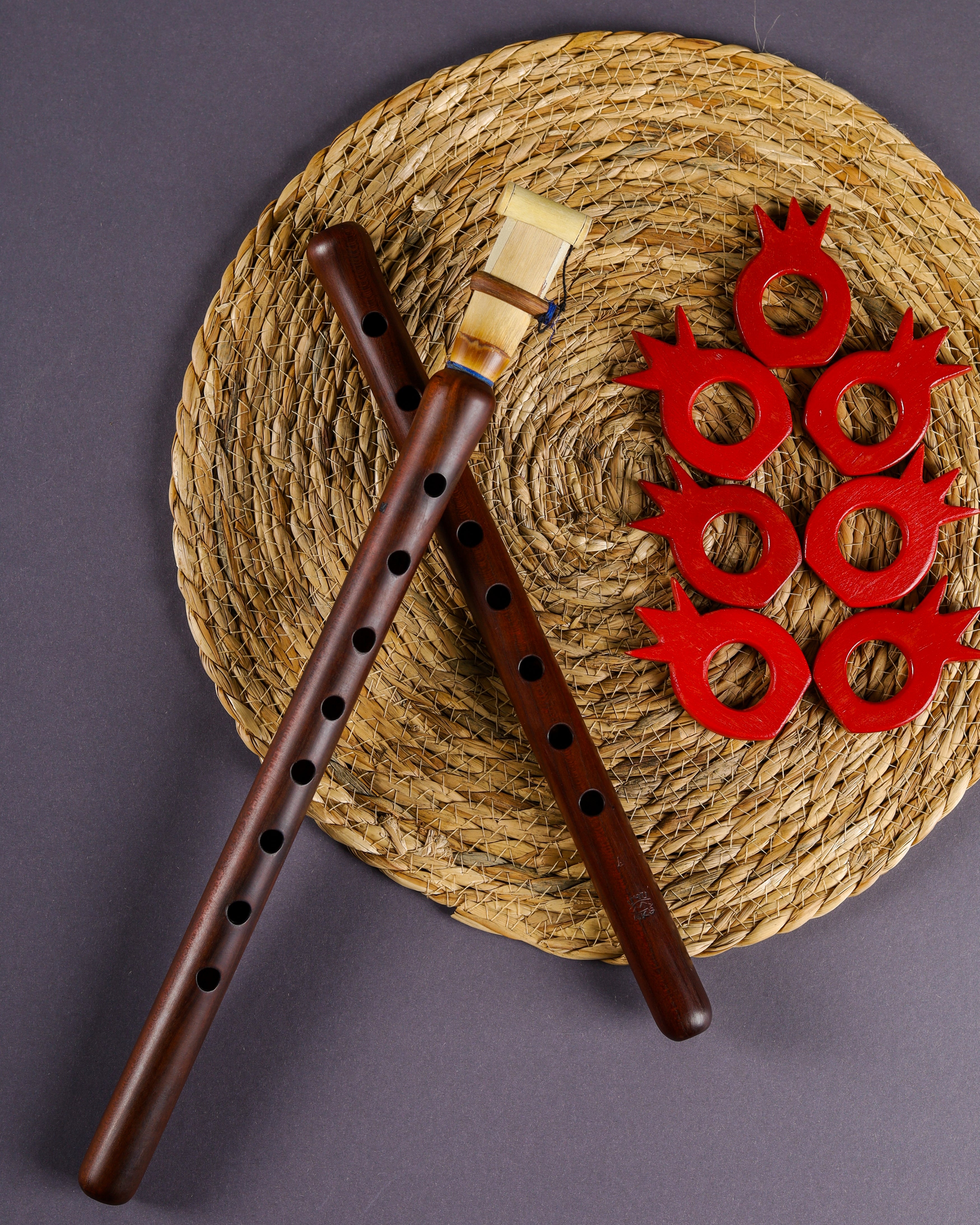Although the Duduk has traditionally been the most commonly used wind instrument in Armenia, there is a variety of other wind instruments available to meet the specific needs of each musical context. There exists many other instruments derived from the Duduk, like the Shvi, Zurna, Blul, and Pku. Here you can discover all the Armenian wind instruments and learn more about their appearances and how they work.
The Zurna
The Zurna, from Persian زورنه (zur: celebration, and ney: reed), is a wind instrument common throughout the Caucasus, Anatolia, and the entire Arab world. Its shrill and overpowering timbre makes it the preferred instrument during festivities.
Its operating methods is similar to that of the Duduk, it is a diatonically tuned instrument with a double reed, and the play of tones and semitones is identical to that of the Duduk.
The Zurna is used in traditional dance orchestras, always accompanied by deep percussions such as the Dhol or Kopal, creating an upbeat and joyful rhythm.
Interpretation of “Rostomi & Zatik Zatik” by Avag Margaryan
The Shvi
The Armenian Shvi can be seen as a kind of piccolo, or a recorder. It is characterized by a very high-pitched timbre. It's a solo instrument that brings a lot of color to fast melodies, thanks its flexibility of tunes.
Its operating mode is similar to that of the Duduk, it is a diatonically tuned instrument, and the play of tones and semitones is identical to that of the Duduk.
The Shvi is played in all musical styles, but it is also found in traditional orchestras, often as the highest-pitched instrument in the orchestra.
Performance of “Yaylavor yars” by Tigran Khojayan at Shvi
The Pku
The Armenian Pku can be seen as an extension of the Zurna, as it is a shrill instrument used for traditional dances.
Its play is distinguished by a timbre that is slightly rounder and more enveloping than that of the Zurna, making the instrument more 'authentic'. More commonly used in rural areas, the Pku is often favored for playing ethnic pieces from the Armenian highlands.
Its operating mode is similar to that of the Duduk and the Zurna, being a diatonically tuned instrument, with the play of tones and semitones identical to those of the Duduk and Zurna.
The Zurna is used in traditional dance orchestras, always accompanied by deep percussions such as the Dhol or Koppal, creating an upbeat and joyful rhythm…
Improvisation by Norayr Gapoyan at the Pku
The Blul
The Blul (in Armenian Բլուլ) is a long, oblique wooden flute made from apricot wood, originating from Armenia and quite similar to the Ney or Kaval.
Its operating method is different from that of the Duduk. It is a chromatically tuned instrument, as opposed to the Duduk, which is tuned to the diatonic scale.
The Blul is played in all musical styles and is often found in traditional orchestras, usually as the most poetic instrument in the orchestra.
Interpretation by Avag Margaryan on the Blul
The Parkapzuk (Bagpipe)
The Armenian Parkapzuk (Պարկապզուկ) is a variant of the bagpipe, first identified in 1300 BC in the territory of Western Armenia.
The Parkapzuk is an instrument composed of an animal skin pouch into which air is blown by the musician. The air contained in the reservoir continuously escapes towards wooden pipes. These pipes are pierced with playing holes which, like on a flute, are closed and opened by the fingers to produce the melody.
Interpretation of a melody on the Parkapzuk"
Interpretation of a melody at Parkapzuk
Sources
Cover image: https://www.malakoff.fr/51-1197/agenda/fiche/concert-de-duduk.htm

